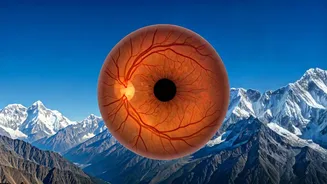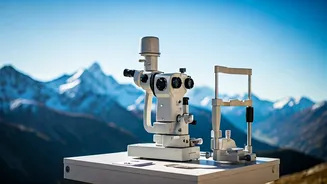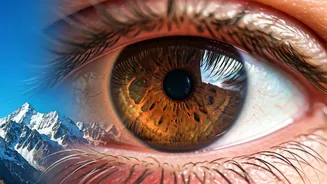Altitude-Related Vision Loss
Sudden vision loss at high altitudes is a serious concern for trekkers. High Altitude Retinopathy (HAR) is a condition that can occur when individuals
ascend to high elevations. The reduced oxygen levels at these altitudes can affect the blood vessels in the retina, potentially causing them to leak and lead to visual impairment. The risk increases with altitude, making it crucial for trekkers to understand the causes and the warning signs to mitigate the risk of vision loss. This understanding is key to preparing for and enjoying high-altitude treks safely.
Understanding HAR Risks
While high-altitude vision loss is not common, trekkers must be aware of the factors that can increase their vulnerability to HAR. Certain individuals face a greater risk. People with pre-existing health conditions like hypertension or diabetes may be more susceptible. The rate of ascent also plays a role; rapid ascents can increase the risk compared to gradual acclimatization. Furthermore, individual susceptibility varies. Knowing these risks allows trekkers to take preventive actions and make informed decisions, such as consulting a healthcare professional before their trek.
Early Warning Signs
Identifying early warning signs of high-altitude vision problems is critical for timely intervention and minimizing potential damage. Trekkers should be vigilant for symptoms such as blurred vision, which could indicate retinal swelling or fluid accumulation. Eye pain or discomfort, including headaches and pressure behind the eyes, should also be noted. Experiencing flashes of light or seeing floaters in the vision can also indicate a problem. Any of these symptoms warrant immediate attention, urging trekkers to descend to a lower altitude as quickly as possible. Early detection and response are crucial for preserving vision.
Protecting Your Eyes
Several preventative measures can help trekkers safeguard their vision during high-altitude travel. Proper acclimatization is paramount; this means ascending gradually to allow the body to adjust to reduced oxygen levels. Staying well-hydrated is also crucial, as dehydration can exacerbate altitude-related health issues. Trekkers can protect their eyes from the sun by wearing appropriate sunglasses with UV protection. Furthermore, it is important to avoid strenuous activities during acclimatization, and consulting a healthcare professional is advisable for individuals with pre-existing conditions. These steps combined can significantly reduce the risk of HAR and ensure a safer trekking experience.
Next Steps Needed
In the event of blurred vision or eye pain at high altitude, taking immediate action is critical. The most important step is to descend to a lower altitude as quickly as possible. This reduces the stress on the retina and can prevent further damage. It is also essential to seek medical attention from a qualified ophthalmologist as soon as possible for diagnosis and treatment. Prompt action in these situations is critical to preserve vision and prevent any lasting harm. By taking swift action, trekkers increase their chances of a full recovery.
















